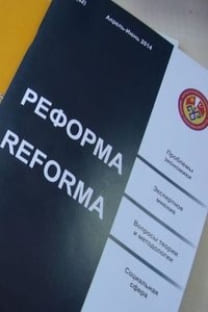USE OF PUBLIC FINANCE IN HEALTH ORGANIZATIONS OF THE KYRGYZ REPUBLIC
hospitals, polyclinics, privileged patients, medical expenses
USE OF PUBLIC FINANCE IN HEALTH ORGANIZATIONSOF THE KYRGYZ REPUBLIC
hospitals, polyclinics, privileged patients, medical expenses,
___
- Данные ФОМС за 2013-2016 гг.
- Департамент лекарственного обеспечения Министерства здравоохранения КР. Электронные стандарты управления против коррупции. – Режим доступа: www.pharm.kg/ru/news/288/2017
- Джапарова, Д. Лекарственный рынок в Кыргызстане и государственная лекарственная политика // Economics. – 2016. – № 10(19). – С. 9-12.
- Кутуева, А. (2010) В Кыргызстане 18 процентов лекарственных средств в аптеках и на черном рынке не имеют сертификата качества. – Режим доступа: www.24.kg/archive/ru/community/81585-v-kyrgyzstane-18-procentov-lekarstvennyx-sredstv.html
- Министерство здравоохранения КР. – Итоги деятельности организаций здравоохранения республики за 2016 год и задачи на 2017 год. – Режим доступа: www.med.kg/index.php/ru/novosty1/1152-itogi-deyatelnosti-organizatsij-zdravookhraneniyarespubliki-za-2016-god-i-zadachakh-na-2017-god.html. 2016
- Мягчилова, А. Почему в Кыргызстане дорожают лекарства? – Режим доступа: Polit.kg 07.07.2014 22:18.
- Программа государственных гарантий по обеспечению граждан медико-санитарной помощью. – Режим доступа: foms.kg/index.php?option=com_content&view=article&id=958
- ISSN: 1694-5158
- Yayın Aralığı: Yılda 2 Sayı
- Başlangıç: 1999
- Yayıncı: Kırgızistan Türkiye Manas Üniversitesi
SÜRDÜRÜLEBİLİR ŞİRKET OLMANIN FAYDALARI
VAR ANALYSIS OF THE MONETARY TRANSMISSION MECHANISM IN KYRGYZ REPUBLIC
ANALYSIS OF EDUCATION-JOB MISMATCH OF YOUTH IN KYRGYZSTAN
Kamalbek KARYMSHAKOV, Burulcha SULAİMANOVA
THE RELATIONSHIP BETWEEN INFLATION, MONEY SUPPLY AND THE BUDGET DEFICIT IN KYRGYZSTAN
Sheraly ABAKİROV, Junus GANİEV
SOCIALIST PRACTICE OF EXPANDED REPRODUCTION AND EFFECTIVE DEVELOPMENT OF AGRICULTURE OF KYRGYZSTAN
Jumabek DZHAİLOV, Leyla MARDALİEVA, Kutpidin ERGESHOV
Temirbek BOBUSHEV, Jiaguo Qİ, Olga KALASHNİKOVA
AUTOMATE PRODUCTION CONTROL EFFECTIVELY
USE OF PUBLIC FINANCE IN HEALTH ORGANIZATIONS OF THE KYRGYZ REPUBLIC
THE EXPERIENCE OF STATE SUPPORT OF AGRICULTURAL PRODUCERS IN THE REPUBLICS OF CENTRAL ASIA COUNTRIES
Azizbek TASHBAEV, Dinara OSMONALİEVA
COST EFFICIENCY AND LOAN QUALITY IN THE BANKING SECTOR OF KYRGYZSTAN
